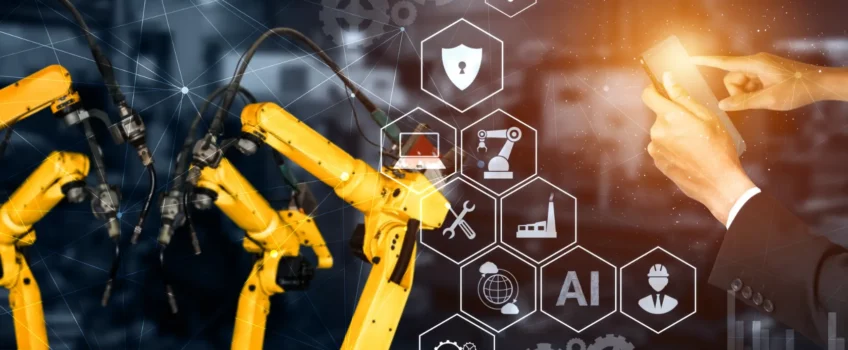
Precision engineering technologies have come a long way since their inception, and their evolution is nothing short of an epic engineering saga. It all started with meticulous craftsmanship, and over the centuries, it has morphed into an advanced science, drastically altering the landscape of industrial development.
From Traditional Craftsmanship to Modern Engineering Technologies
The roots of precision engineering trace back to traditional craftsmanship where every piece was painstakingly handcrafted by skilled artisans. In an era devoid of machines and automation, these craftsmen meticulously manipulated raw materials into precisely engineered pieces.
At the turn of the 18th century, the Industrial Revolution sparked a significant transformation. This period saw a shift from manual labour to mechanised production methods, laying the groundwork for the future of precision engineering.
Engineering In The Industrial Revolution
During the Industrial Revolution, precision engineering technologies began to take shape. The advent of the lathe, a revolutionary tool in manufacturing, represented a significant stride in precision engineering. The lathe enabled workers to shape metals with a precision that had been unthinkable before.
Steam engines, the crowning glory of the Industrial Revolution, also relied heavily on precision-engineered components. The demands of the burgeoning railway industry resulted in a pressing need for accurate, reliable parts, further propelling the development of engineering technologies.
Also Read: British Manufacturing Through The Ages
Post-War Precision Engineering Technologies
The two World Wars were catalysts for the advancements of engineering tech. War, while destructive, necessitated rapid technological developments, and precision engineering played a pivotal role. The rise of aviation, artillery, and naval engineering during these periods demanded the highest level of precision and reliability.
The Advent of Computerised Engineering Systems
In the post-war era, precision engineering technologies took a monumental leap with the integration of computer technology. The arrival of Computer Numerical Control (CNC) in the 1950s allowed for unparalleled precision and efficiency.
CNC machining utilised digital instructions to guide machine tools, enabling intricate components to be manufactured with an accuracy that dwarfed the capabilities of even the most skilled craftsmen. The CNC era marked a significant turning point in the history of precision engineering tech.
The Modern Face of Precision Engineering Technologies
Today, precision engineering technologies have permeated nearly every aspect of modern industry. From the cars we drive to the smartphones we can’t live without, the footprint of precision engineering is indelible.
Advanced technologies such as additive manufacturing (3D printing), artificial intelligence, and automation have further enhanced the capabilities of precision engineering. For instance, 3D printing, a stellar development in manufacturing, allows for rapid prototyping and production of complex geometries that were previously unachievable.
Recommended: Going Digital in the Fourth Industrial Revolution
The Future of Precision Engineering
As we look towards the future, the evolution of precision engineering shows no signs of slowing down. The integration of IoT (Internet of Things), advanced robotics, and even quantum computing, promises to push the boundaries even further.
In an increasingly complex and technologically driven world, precision engineering technologies will continue to play a central role in shaping our future. It’s a testament to our enduring journey from traditional craftsmanship to the cutting-edge technologies we witness today, a journey that truly underpins our technological evolution.
Precision engineering technologies have drastically evolved over the centuries. What began as skilled craftsmanship has transformed into a technologically advanced discipline. It’s a journey that has seen the rise of machines, the introduction of digital control, and the dawn of AI and robotics. Yet, at its core, the essence of precision engineering remains – the pursuit of accuracy, efficiency, and perfection.
Embracing the Digital Revolution in Precision Engineering Technologies
The digital revolution has had a profound impact on the development of precision engineering technologies. The ability to design, simulate, and test components digitally, before they’re even physically created, represents a significant stride in efficiency and accuracy.
Digital design software, such as Computer-Aided Design (CAD) and Finite Element Analysis (FEA), offer engineers the ability to visualise and analyse their designs with extreme precision, thereby avoiding potential flaws early in the process.
Unleashing Innovation
Innovation and precision engineering technologies go hand in hand. One of the most exciting areas of innovation has been in the field of nanotechnology. Engineers can now manipulate materials at the atomic level, leading to breakthroughs in areas such as medicine, electronics, and energy production.
Consider the manufacturing of semiconductors, a cornerstone of modern electronics. The ever-shrinking size of transistors, now well into the nanometre scale, wouldn’t be possible without the advancements in precision engineering technologies.
Also Read: Smart Factories: The Future of Custom Fabrication
Precision Engineering and Sustainability
As we become more aware of our environmental footprint, precision engineering technologies are playing a critical role in the drive towards sustainability. Precision engineered renewable energy systems, such as wind turbines and solar panels, are at the forefront of the fight against climate change.
Moreover, advanced manufacturing techniques, like 3D printing, promote material efficiency, minimising waste and contributing towards a circular economy.
Precision Engineering and the Human Element
While machines and digital systems have revolutionised engineering, the human element remains indispensable. The expertise of precision engineers, their creative thinking and problem-solving skills, are as crucial today as they were in the days of traditional craftsmanship.
Training and education in the field have evolved in tandem with technological advancements. Future engineers are not only educated in the fundamentals of their craft but also taught to embrace new technologies and continually adapt to this rapidly progressing industry.
Recommended: Predictions for Manufacturing: How To Stay Competitive
Conclusion: Precision Engineering Technologies – The Past, Present and Future
The evolution of precision engineering technologies is a testament to human ingenuity and our relentless pursuit of perfection. From humble beginnings in traditional craftsmanship, we now find ourselves at the helm of cutting-edge technologies, poised to make even greater strides in the future.
As we continue to push the boundaries of what’s possible, we uphold the legacy of those early artisans. We continue their tradition of meticulous craftsmanship, but we do so armed with advanced tools and technologies, marking a new era in the journey of precision engineering.
The unfolding saga of precision engineering technologies is truly a thrilling testament to human progress, a saga that shows no signs of ending but only of evolving and transcending the thresholds of our technological prowess.


 Mail:
Mail: 




